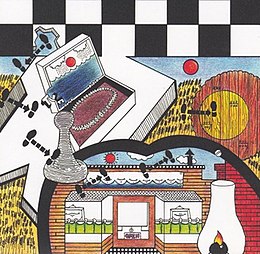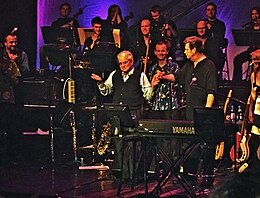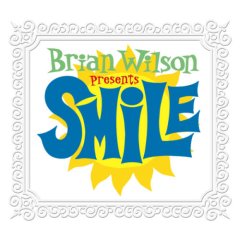
Brian Wilson Presents Smile is the fifth studio album by American musician Brian Wilson, released on September 28, 2004 on Nonesuch. It features all-new recordings of music that he had originally created for Smile, an unfinished album by the Beach Boys that he abandoned in 1967. Revisiting Smile was an intense emotional undertaking for Wilson, as he had been deeply traumatized by the circumstances that had originally surrounded the project.

Smiley Smile is the 12th studio album by American rock band the Beach Boys, released on September 18, 1967. Conceived as a simpler and more relaxed version of their unfinished Smile album, Smiley Smile is distinguished for its homespun arrangements, "stoned" aesthetic, and lo-fi production. Critics and fans generally received the album and its lead single, "Heroes and Villains", with confusion and disappointment. The album reached number 9 on UK record charts, but sold poorly in the U.S., peaking at number 41—the band's lowest chart placement to that point.

Holland is the 19th studio album by American rock band the Beach Boys, released January 8, 1973 on Brother/Reprise. It is their first album recorded without Bruce Johnston since 1965, their second with Blondie Chaplin and Ricky Fataar, and their final studio album created under the de facto leadership of Carl Wilson and manager Jack Rieley. The LP was originally packaged with a bonus EP, Mount Vernon and Fairway, which consisted of a 12-minute fairy tale written and produced by Brian and Carl Wilson.
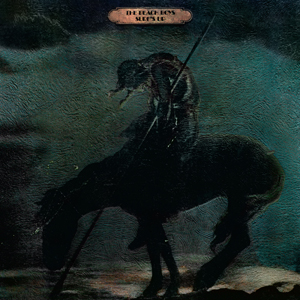
Surf's Up is the 17th studio album by American rock band the Beach Boys, released on August 30, 1971 on Brother/Reprise. It received largely favorable reviews and reached number 29 on the U.S. record charts, becoming their highest-charting LP of new music in the U.S. since 1967. In the UK, Surf's Up peaked at number 15, continuing a string of top 40 records that had not abated since 1965.

Carl and the Passions – "So Tough" is the 18th studio album by American rock band the Beach Boys, released May 15, 1972 on Brother/Reprise. The album is a significant musical departure for the band and is the first to feature the Flames' Blondie Chaplin and Ricky Fataar as additions to their official line-up. It sold poorly and was met with lukewarm reviews, but later gained stature as a cult favorite among fans.

"Good Vibrations" is a song by the American rock band the Beach Boys that was composed by Brian Wilson with lyrics by Mike Love. It was released as a single on October 10, 1966 and was an immediate critical and commercial hit, topping record charts in several countries including the United States and the United Kingdom. Characterized by its complex soundscapes, episodic structure and subversions of pop music formula, it was the most expensive single ever recorded. "Good Vibrations" later became widely acclaimed as one of the finest and most important works of the rock era.
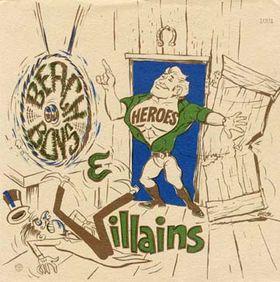
"Heroes and Villains" is a song by the American rock band the Beach Boys from their 1967 album Smiley Smile and their unfinished Smile project. Written by Brian Wilson and Van Dyke Parks, Wilson envisioned the song as an Old West-themed musical comedy that would surpass the recording and artistic achievements of "Good Vibrations". The single was Brother Records' first release. While it failed to meet critical and commercial expectations, it was a hit record, peaking at number 12 in the U.S. and number 8 in the UK.
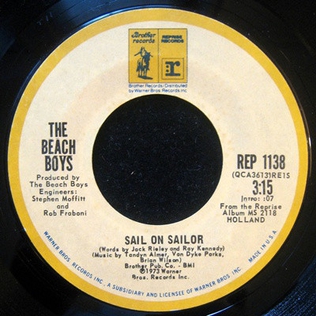
"Sail On, Sailor" is a song by American rock band the Beach Boys from their 1973 album Holland. It was written primarily by Van Dyke Parks and Brian Wilson with Ray Kennedy, Tandyn Almer, and Jack Rieley. The lead singer on the song is Blondie Chaplin, making this one of the band's few well-known songs not sung by Mike Love, Brian Wilson or Carl Wilson. The song was released as a single in 1973, backed with "Only with You", and peaked at No. 79 on the Billboard singles chart. A 1975 reissue charted higher, at No. 49.
"Wonderful" is a song by the American rock band the Beach Boys from their 1967 album Smiley Smile and their unfinished Smile project. Written by Brian Wilson and Van Dyke Parks, it was their only collaboration that resulted in a love song, telling the story of a young girl's sexual awakening and its disruption of her devotion to God and her parents.

"Cool, Cool Water" is a song by the American rock band the Beach Boys from their 1970 album Sunflower. It was written by Brian Wilson and Mike Love and later issued as an A-sided single in March 1971.
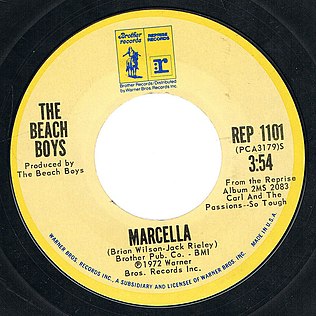
"Marcella" is a song by the American rock band the Beach Boys from their 1972 album Carl and the Passions – "So Tough". Written by Brian Wilson, Jack Rieley, and Tandyn Almer, the lyrics were inspired by Wilson's fixation with a local massage therapist. It is the last song to feature Bruce Johnston during his original tenure in the band.
"Wind Chimes" is a song by the American rock band the Beach Boys from their 1967 album Smiley Smile and their unfinished Smile project. Written by Brian Wilson and Van Dyke Parks, it was inspired by wind chimes hanging outside Wilson's home and was one of the first pieces tracked for the Smile sessions.
"Vegetables" is a song by American rock band the Beach Boys from their 1967 album Smiley Smile and their unfinished Smile project. Written by Brian Wilson and Van Dyke Parks, the song was conceived by Wilson as a tongue-in-cheek promotion of organic food. Another reported inspiration for the song was a humorous comment Wilson heard about the effect of marijuana turning him and his friends into a "vegetative" state.
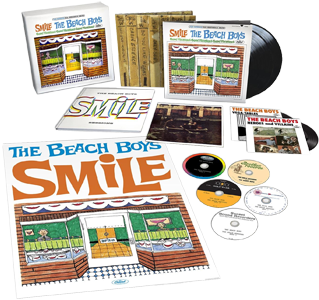
The Smile Sessions is a compilation album and box set recorded by American rock band the Beach Boys, released on October 31, 2011, by Capitol Records. The set is the follow-up to The Pet Sounds Sessions (1997), this time focusing on the abandoned recordings from the band's unfinished 1966–1967 album Smile. It features comprehensive session highlights and outtakes, with the first 19 tracks comprising a hypothetical version of the completed Smile album.
"Do You Like Worms?" is a song by American rock band the Beach Boys from their unfinished album Smile. Written by Brian Wilson and Van Dyke Parks, the song is about the recolonization of the American continent and contains references to the Sandwich Islands and "Bicycle Rider Back" playing cards. None of the lyrics appear to mention worms; asked about the title, Parks said he could not remember where it came from.
"Look" is an incomplete musical piece that was composed by American musician Brian Wilson for the Beach Boys' aborted Smile album. Wilson produced the backing track at the start of the Smile sessions in August 1966. It is theorized that a missing session tape may have contained a vocal track that he recorded with his bandmates in October.
"Child Is Father of the Man" is a song by American rock band the Beach Boys that was written by Brian Wilson and Van Dyke Parks. It was originally recorded for the band's never-finished album Smile. In 2004, Wilson rerecorded the song for Brian Wilson Presents Smile. In 2011, the Beach Boys' original recording was released on The Smile Sessions.

Smile is an unfinished album by the American rock band the Beach Boys that was intended to follow their 1966 album Pet Sounds. It was to be an LP of twelve tracks assembled from modular fragments, the same editing process used for their "Good Vibrations" single. Instead, after a year of recording, the album was shelved and the group released a downscaled version, Smiley Smile, in September 1967. Over the next four decades, few of the original Smile tracks were officially released, and the project came to be regarded as the most legendary unreleased album in popular music history.
"Holidays" is an instrumental by the American rock band the Beach Boys that was composed by Brian Wilson for their never-finished Smile album. In 2003, it was rewritten with new lyrics by Van Dyke Parks as "On a Holiday" for the project Brian Wilson Presents Smile (2004).

Mount Vernon and Fairway is an EP by the American rock band the Beach Boys that was included as a bonus record with their 1973 release Holland. It is a 12-minute musical fairy tale, primarily composed by Brian Wilson, assembled by Carl Wilson, and narrated by manager Jack Rieley. Brian provided the voice of the Pied Piper and drew the sleeve cover.



